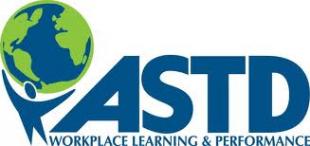Each year the American Society for Training & Development (ASTD) surveys learning and development professionals and compiles their findings into the State of the Industry Report. This industry standard report includes measurements of budgets, hours invested and the number of staff devoted to learning and development, with useful differentiations between the best-performing training organizations and standard programs. All of this information supports benchmarking and goal-setting for the year to come.
Every year I settle down with the State of the Industry Report to assess where OpenSesame fits into the future of learning – and what lessons learned I can share with our community. This year’s report revealed interesting data about spending, a shift toward technology and increased efficiency in learning and development.
Spending Up But Hours Steady
Despite the recession and sluggish economic recovery, ASTD found that the organizations’ average direct expenditure per employee increased from $1081 to $1228 in 2011. This reflects business commitment to expanding capacity and encouraging employee growth through learning opportunities. At the same time, ASTD found that the number of learning hours used per employee remained stable at 32 a year.
A simple analysis reveals that organizations are spending more to deliver the same number of training hours. There’s no way to know for sure what that increase in spending is paying for: Inflation? More flashy technology tools? Subject matter experts’ time?
Technology Use Up
Meanwhile, ASTD found that the most effective learning and development organizations use more technology to support learning than lower-performing peers. How does technology support improved performance?
The highest-performing organizations are focusing on the unique services they can offer internally and to leverage partners, vendors and outsourced services (like OpenSesame!) to save money and create targeted solutions. The key here is to focus staff resources on the highest possible uses of their time: Likely not data entry, developing duplicative content or supporting LMS users. Instead, the highest-performing organizations rely on partners for widely applicable tasks and use their team’s time on the specialized functions that best support their strategic, unique goals.
Cost of a Learning Hour Continues to Grow
Per the ASTD Report, the average cost of a learning hour throughout training organizations is $73. This number seemed high, so I calculated the average cost of a learning hour purchased from the OpenSesame learning marketplace: $38.09.
As I suspected, purchasing off-the-shelf content to support learning goals also offers an excellent opportunity to spend efficiently. With more than 6,000 courses in the marketplace on topics as varied as algebra and customer service (or leadership and forklift operations), the OpenSesame catalog offers a cost-effective way to meet content needs.
Fighting the Good Fight
In closing, one more statistic to blow your mind: “ASTD estimates that U.S. organizations spent about $171.5 billion on employee learning and development in 2010″. This is still lower than the pre-recession high, but even so that’s more than the music, book and video game industries combined.
Next time you think about your role in the learning & development profession, remember that you’re part of a huge community, working hard to support increased production, employee satisfaction and organizational effectiveness.






